I figured the off season, past summer, past autumn trees colors (although without Sugar Maples the vibrant reds that we get to experience in New England are just not there. We Yanks are spoiled and until you see what Europeans call foliage color, you can’t appreciate our autumns. An occasional Japanese or Chinese ornamental maple that might grace a garden as was seen on the Burns Memorial garden is a rare sight) would yield lower prices on rooms and less crowds to navigate and I have seen daffodils before. My room rate at the Glen Wynne Guest House, seen here, was fair and the breakfast was very good but the crowds were much larger than I expected, especially since the weather was pretty wet. Turns out it was a school holiday week and that brought out throngs of wee bairns and families with their dogs. I can not imagine what the high season is like. As it was I found my self buffeted frequently. I’m guessing it would put Cape Cod and the Islands to shame. But enough of that. Windemere is a beautiful village with many houses made from slate giving it a real unique “English” look to my eyes. Before I go on I must point out that tis is a very, very wet part of Britain. The Lake District sees between 170 & 200 days a year when it rains. And just because it might not be raining doesn’t it’s sunny, although I had more dry than wet weather and some sun. Boston in comparison averages 137 days a year when it rains a measurable amount. After checking in I dumped my kit to stretch the legs and see the area. Dressed for the weather, I found the heavy mist was no problem, except for visibility, I headed through the town and aimed for Lake Windemere, the largest body of water in England (Loch Lomond & Ness are over 5 times bigger) it is a nice looking body of water.
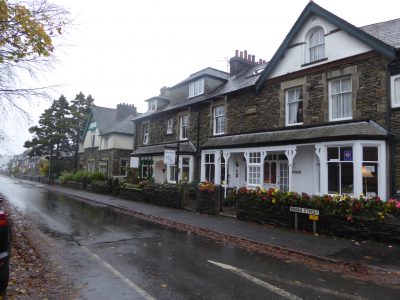
A major attraction are the boat rides. There are three options running from 45 to 90 minutes and they stop in different towns for a hop-on, hop-off option.
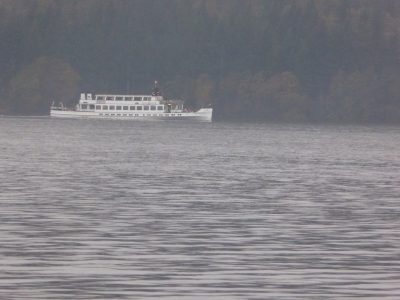
There is a path by an elementary school that takes you to the water’s edge about a mile’s walk for the village and a good place to rinse the hands.
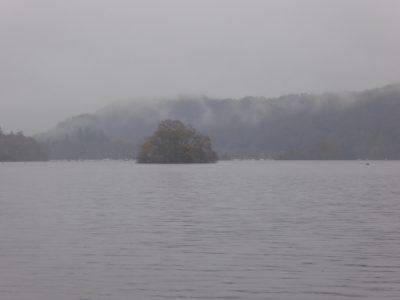
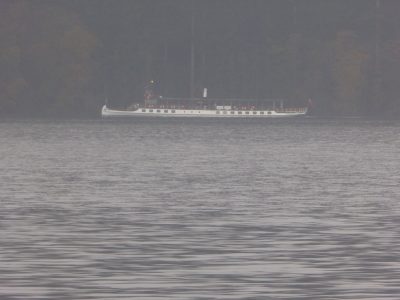
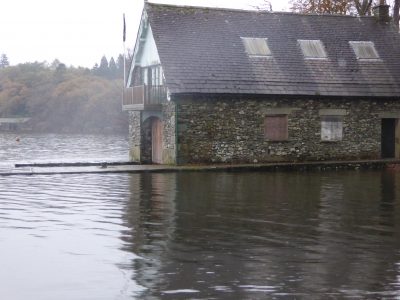
Then a short climb takes you to Queen Adelaide’s Hill, named after Victoria’s aunt who came there by boat in 1840. For such a minor effort, the views were grand.
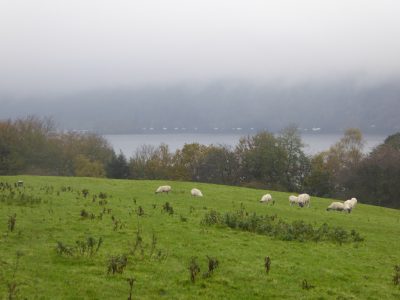
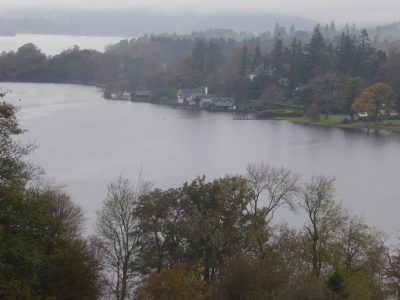
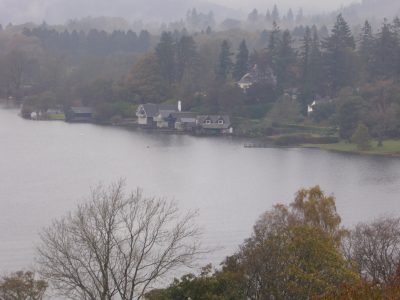
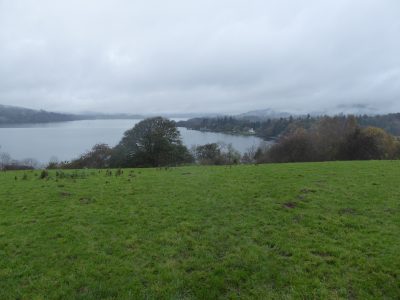
Heading back to the village of Windermere via a marked walkway I passed both this church
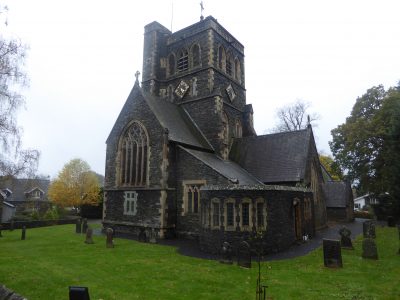
And this surgery (doctor’s office for Yanks)
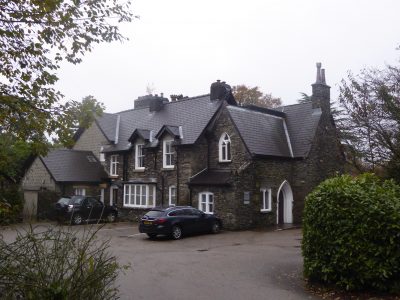
And I think this idea of a framed mirror behind a bit of sculpture was clever.
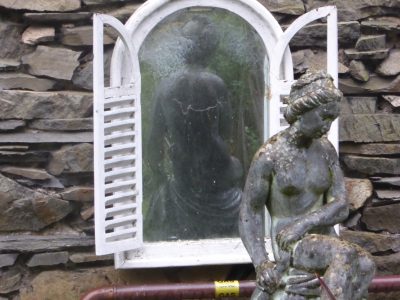
And this was the view from my room.
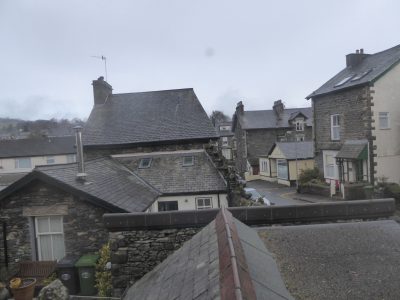
The next day started with a heavy rain but called for improvement as the day progressed. Since there is next to nothing to do in Windermere (and Bowness or Ambleside for that matter) other than shop and I had no need nor desire to do so, I went across the street to where the local library was offering an exhibit relating to the Holocaust and the part the Lake played in WWII. The library was a former home from the mid 1800’s. I was stunned but the size if the trees on the property including this one which appears to be a California Redwood! If there were 3 of me (I know, shudder the thought) we could not have reached around it’s girth. It was planted in 1850.
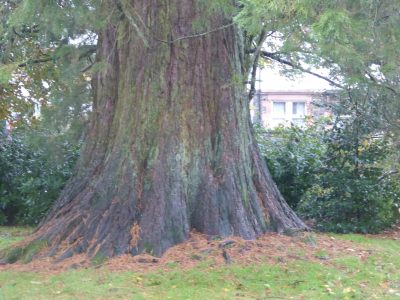
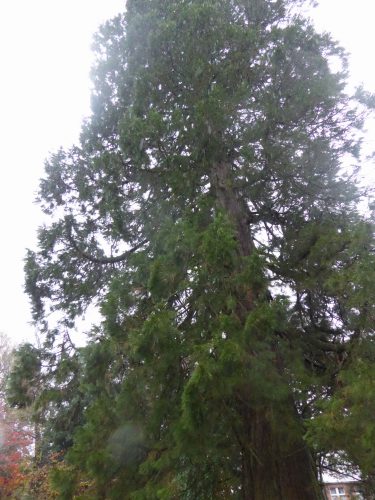
During WWII the lake was used to develop the Sunderland Flying Boat as it was a good bit of water to train on and far from German eyes.
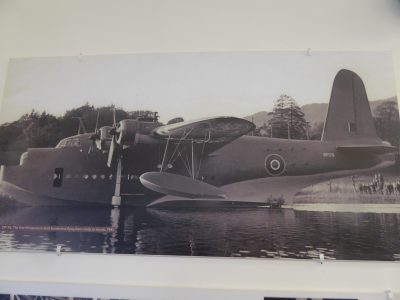
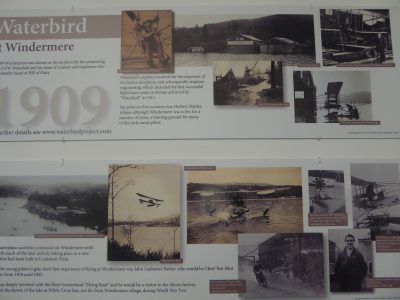
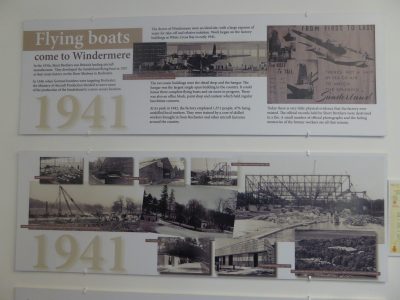
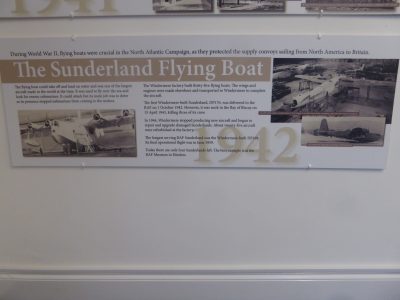
But the real enlightening story was of the Windermere Boys. These were Jewish children rescued from Nazi concentration camps. After many years of Hell on earth, they were put on RAF Stirling aircraft and flown to Britain. They were housed and rehabilitated in a former camp used by the RAF and then some moved on to other places, including America and some chose to stay here in the Lake District. The movie where survivors told the horror of the camps and subsequent survival was very moving.
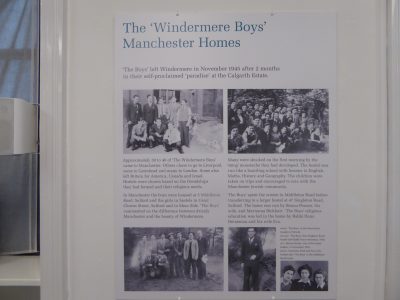
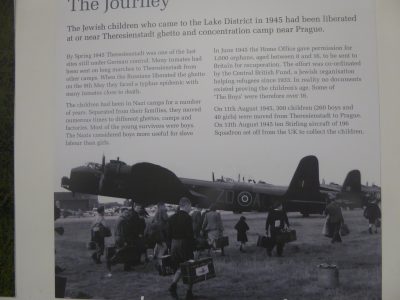
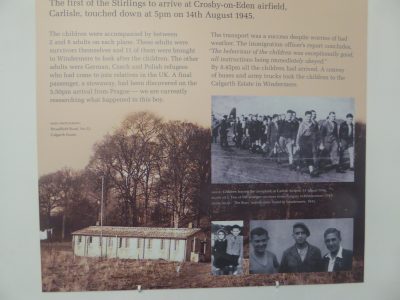
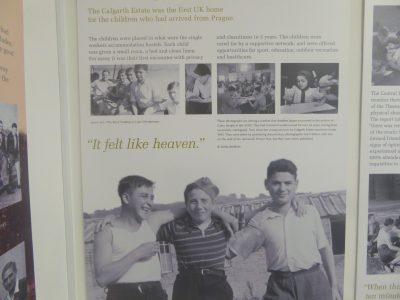
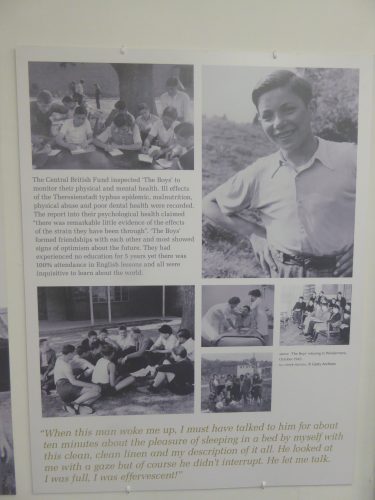
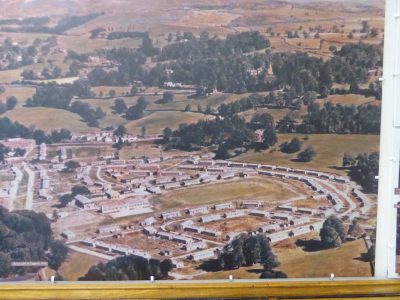
And I just liked this bush, a type of Dogwood I think
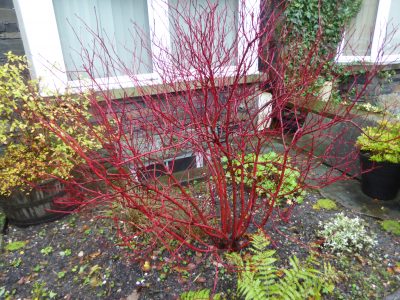
Later that day the weather did improve so I decided on the short, 1 mile walk up to the 738 ft high Orrest Head. This was the first look the reknowned hillwalker or fell walker in Northern England had of the wonders of walking, not mountaineering. His reaction is on the plaque on the summit. His life work resulted in his seven-volume Pictorial Guide to the Lakeland Fells, published between 1955 and 1966 and as a result of this the concept of hillwalking brought millions to the Lake District and other walkable hills throughout the UK.
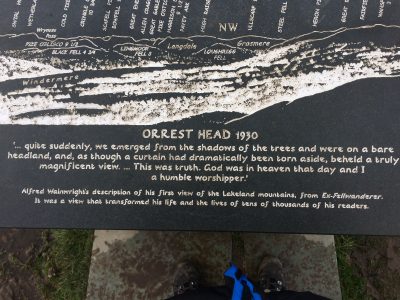
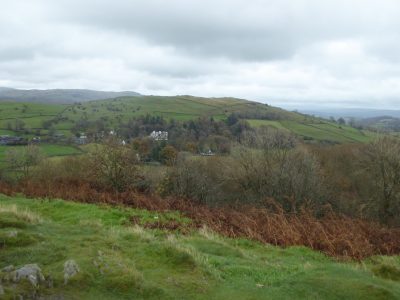
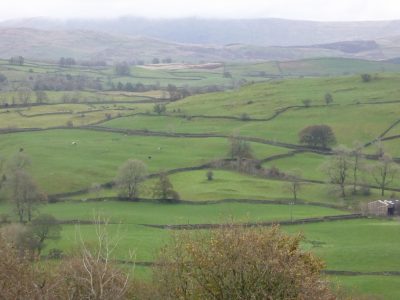
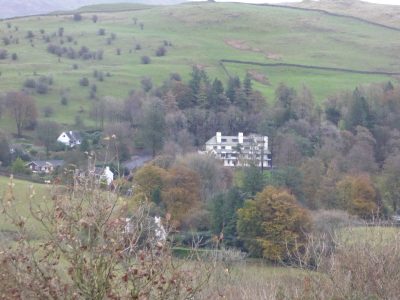
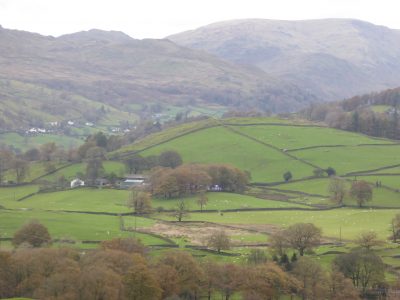
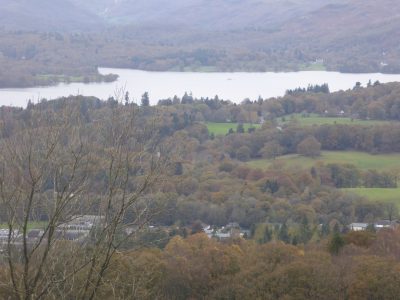
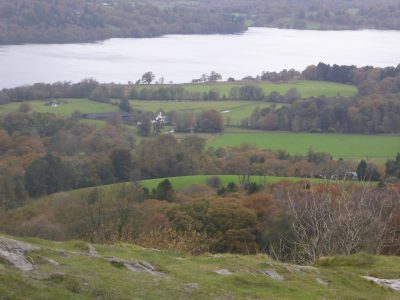
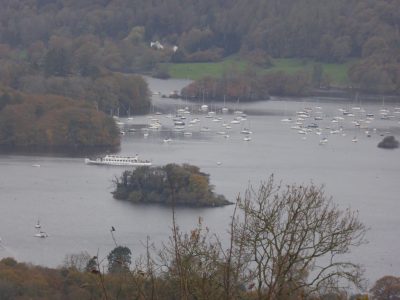
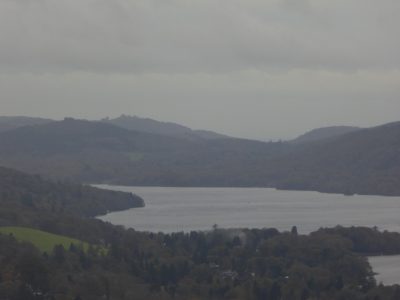
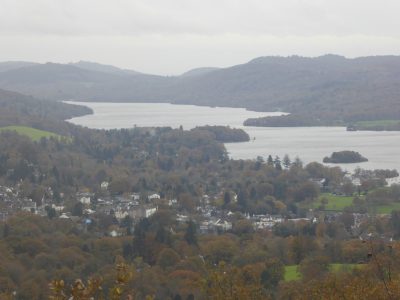
This gives you a wee idea of my view.
The village Windermere from the pathway
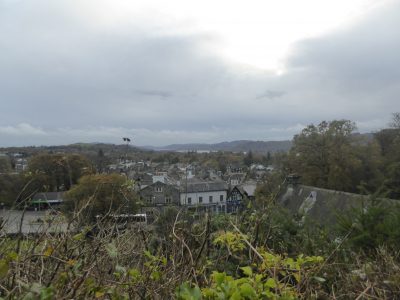
I’ll be in Bowness for the next two days a village just a mile or so from my present locale.
6.3m
{ 0 comments… add one now }